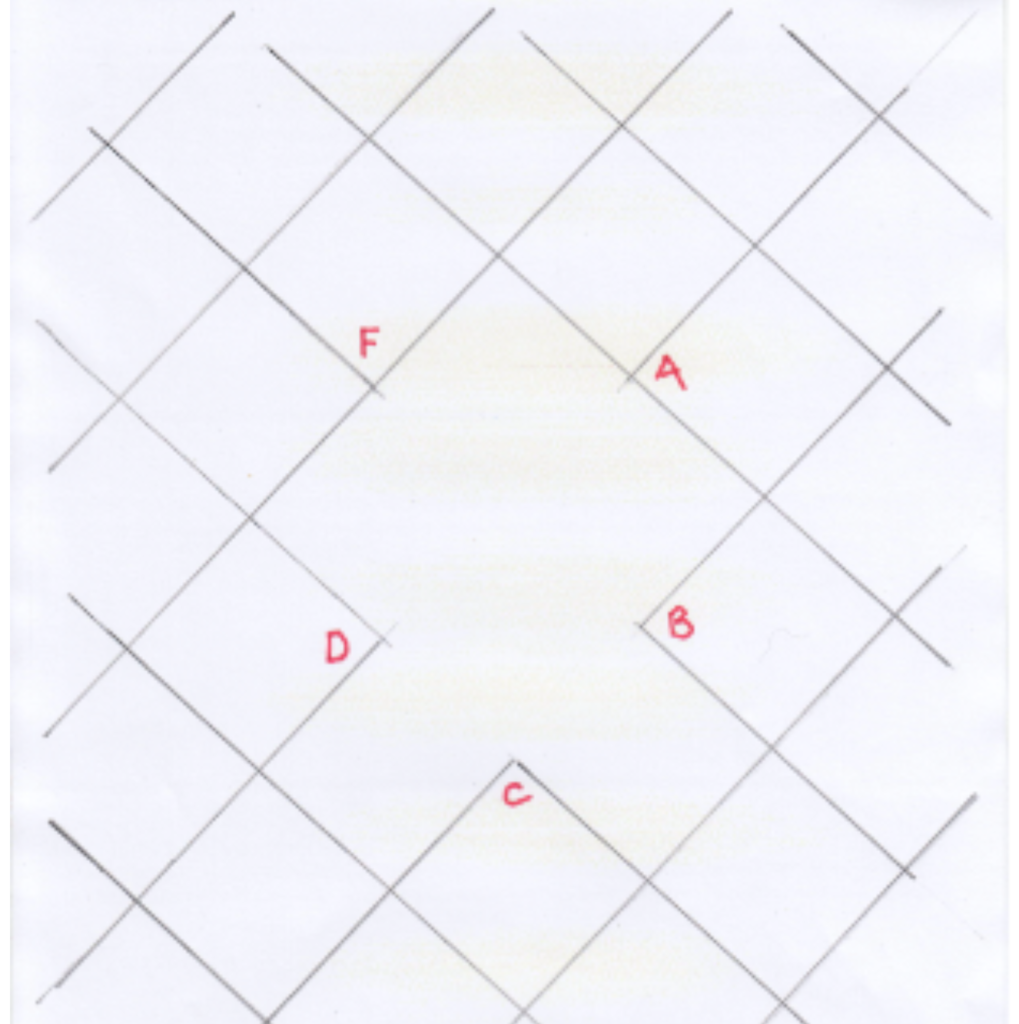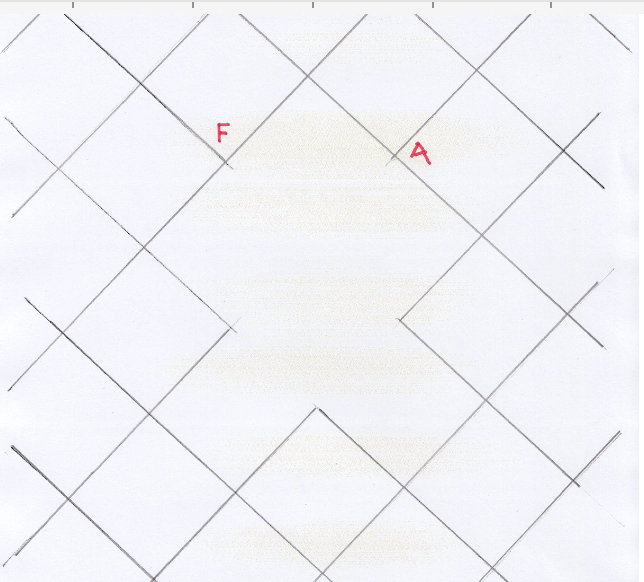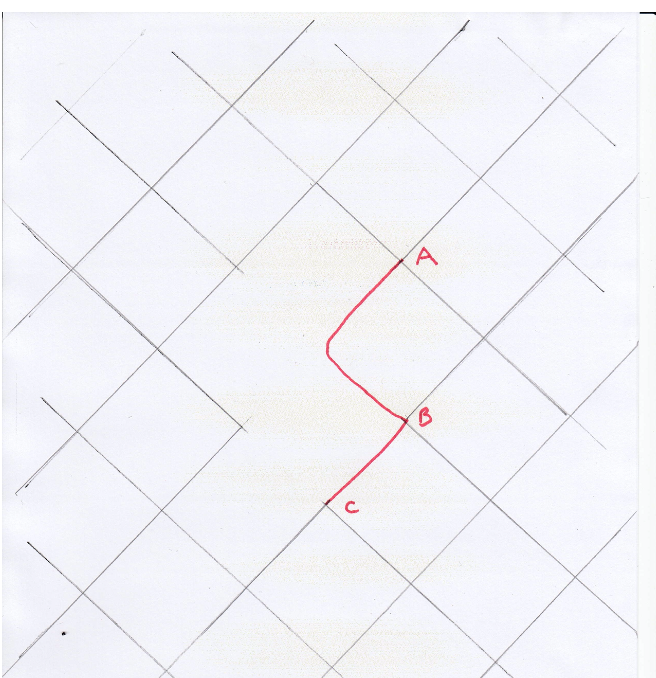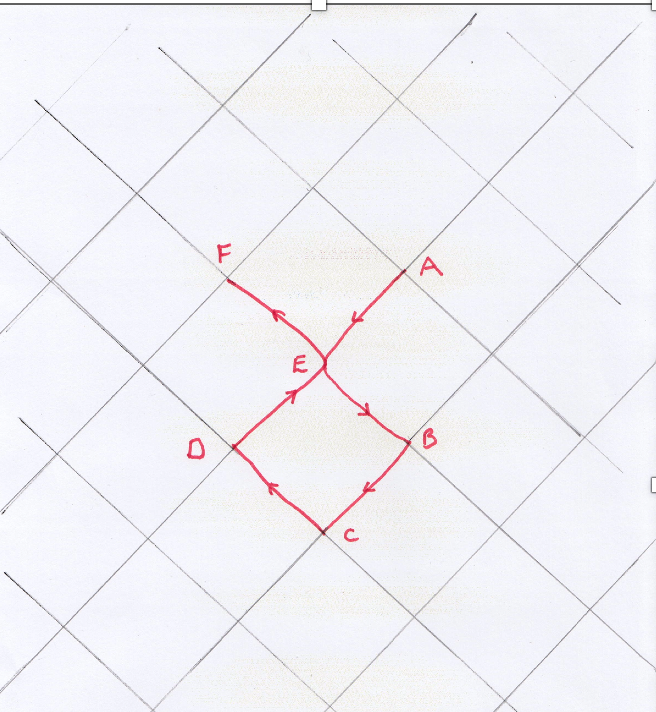Mending the Nets
The nets would quite often have holes in them, caused by a variety of reasons. The older nets could become a bit brittle, particularly the roofs of the heads. This was probably caused by UV. During the season the nets would either be lying spread out on the green or floating in the water and exposed to any sunlight. The roof of the nets again were also abraded by having the boat pulled back and forward over them. Occasionally when the net was being worked it might snag or catch on some part of the boat which could lead to a rip.
The nets could also be damaged by other sea life. Seals hunting for salmon could find their way into the nets. They were strong enough to burst a hole through the mesh walls to get out. Any fish left in the net would also swiftly depart through that hole. In later summer and perhaps once a season a basking shark would find its way into the net. There were also stories of Orcas (Killer Whales) interacting with nets: they would cause such destruction that the net was beyond repair
Small repairs, one or two meshes, could be quickly done at sea. Bigger jobs, like a seal damage meant the net had to be changed that day.

© Lorna Taylor
Photo 300
Net mending on the green in Kilchoan 1983
This is early in the season. The net has not yet had its “cross sticks “attached
Mending the nets was a skill requiring patience, a sharp knife, and the ability to wield a “net needle” . The there was a language of “three leggers” and “two leggers” that had to be understood before a hole could be properly mended.

This hole has four “three leggers”
F, A, B and D
This net is not ready to be mended

This hole now has two “three leggers”, F and A.
B, C and D are “two leggers”
This net is now ready to be mended
The first part of the mending process was the cleaning up and preparation of the hole for resewing. To mend a hole the fisherman used a length of twine, one end of which would start at a “three legger”: the other end would finish at a “three legger”. A hole to be mended could only have two “three leggers” with the rest being “two leggers”. A “three legger” is a mesh knot with three bits of twine joined, a “two legger” a knot with only two bits of twine. At times quite a lot of net would have to be cut away to prepare the hole. See Diagrams 3.1 and 3.2 above
Once the hole was cleaned up the mend could be completed. The hole was resewn with a net needle loaded with the correct sort of twine. See Diagrams 3.3 onwards

©Paul Taylor
Photo 301
Wooden Net Needles
From the 1970s and 1980s
Nowadays net needles are made of plastic: in the 1970s and 1980’s they were wooden, some factory made, others hand made by the fisherman. There was a variety of net needles at Fascadale, all wood, some home made and using different types of wood
The same knot was used throughout the mend below See below
Mending a net

This hole is now prepared.
Two meshes have been cut away
It now only has 2 three leggers, F and A
It can now be res

Starting at three legger A go to two legger B

B to C

C to D

D to F but putting a net knot in at E to form the mesh

The net is now repaired
The Net Knot
Here is quite a good video detailing net knot tying
This site has lots of good videos, photographs and other information about knots and nets
Other film about net making and mending
Nice little film about net making
Net mending.
What he in the video calls a “halfer” we called a “three legger”
